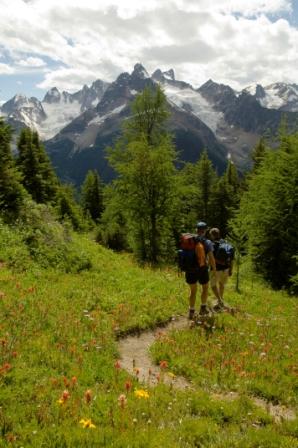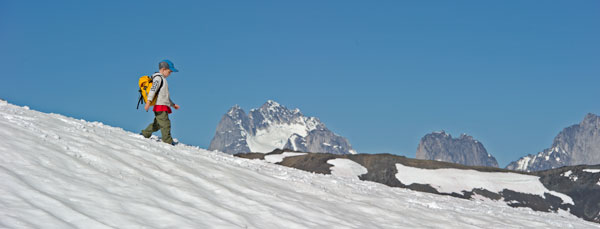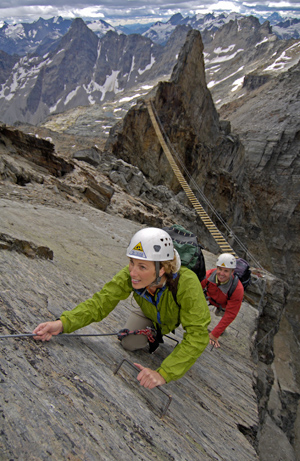Originally Posted by Topher Donahue on Fri, Aug 20, 2010

Sitting in a car or bus has a familiar sleepy vibration. It’s a rare person in our modern world who doesn’t know riding in a plane is all about that hypnotic jet hum in an atmosphere thick with a hundred passenger’s quiet discomfort. Millions of people know the smooth speed of an electric train and the hypnotic rhythm of a rocking boat. But far fewer people know what it’s like to travel by helicopter, especially the big twin-engine Bell 212 – known as the safest helicopter in the world – used on CMH Summer Adventures.
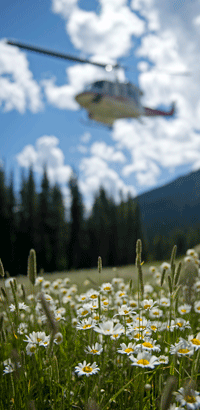 Adventure travel by helicopter in the mountains is like nothing else. The combination of relatively slow speeds compared to a plane, and proximity to the earth for a truly bird’s eye view of alpine grandeur, offers the passenger an unparalleled intimacy with flight.
Adventure travel by helicopter in the mountains is like nothing else. The combination of relatively slow speeds compared to a plane, and proximity to the earth for a truly bird’s eye view of alpine grandeur, offers the passenger an unparalleled intimacy with flight.
Leaving the ground is the first eye-opener. The helicopter takes off slowly, rising vertically for several metres, and there is a second or two when if feels like the machine could go any direction – and it can. Then it leans forward slightly and begins to accelerate, quickly reaching cruising speed. This is about the point when the cameras start clicking.
As a passenger in a helicopter, your sensitivity to changes in speed is very acute. In a jet, it is impossible to get a feel for speed because of the high cruising altitude. When “cruising” in a Bell 212 during a CMH Summer Adventure, you’re right at mountaintop level, or lower, doing around 200 kilometres per hour – about the average speed of a Formula One race.
If you’ve ridden in smaller helicopters, which often feel like they are rotating back and forth, the Bell 212 is unbelievably stable – sort of the Limousine of helicopters. While it has two engines, and can fly on one engine if the other should fail, the mighty Columbia Mountains force the Bell 212 to fly slow to around 100 kilometres per hour while climbing – think highway speed, but looking out the window at a glacier.
Unless they’re in a rescue scenario, pilots don’t just fly straight up a vertical mountain face. A good mountain pilot, like those we work with from Alpine Helicopters, will read the terrain for the easiest line just like a mountain guide, crossing passes at their lowest points, avoiding unnecessary altitude gain and loss, watching the wind and weather, and always keeping an escape route open if conditions change.
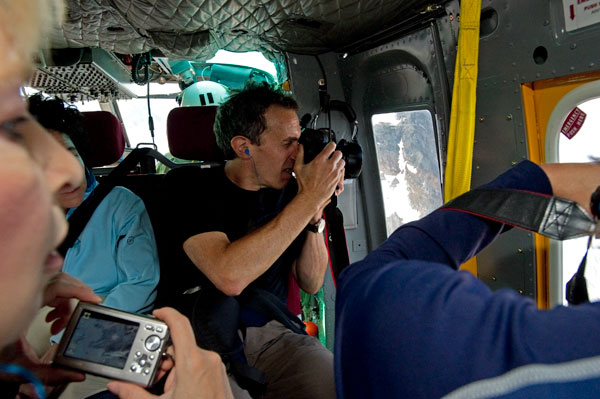
On the way down, the helicopter can lose altitude fast enough to put your stomach in your throat – up to 1000 metres per minute – but the pilots save those kinds of speeds for when they’re alone in the helicopter. With passengers, they slow the descent to give everyone a smooth, comfortable, photogenic ride.
If you’ve never been in a helicopter, riding in a Bell 212, on route to one of the myriad experiences of a CMH Summer Adventure, is the ultimate way to give it a try. Not only do you get a scenic flight in the world’s safest helicopter through some of the world’s most beautiful mountains, but at the end of the flight you are left in a breathtaking location with a guide to spend the day in a mountain paradise surrounded by raw, quiet, untouched wilderness.
Photos by Topher Donahue.
Air speed information for the Bell 212 provided by Alex Holliday, Safety Manager for Alpine Helicopters.

